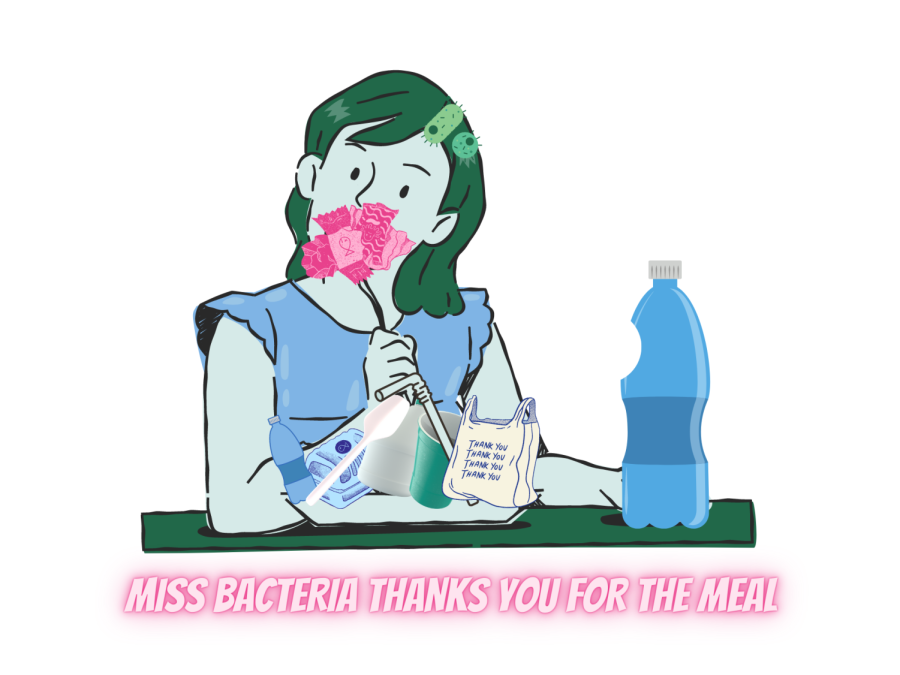Plastic-eating bacteria: the pollution solution?
February 6, 2023
Since the 1950s, roughly 8 million tonnes of synthetic polymers have entered the ocean each year. Of these millions of tonnes, less than 1% is floating on the surface of the world’s waters. The remaining amount of plastic dumped into seas remains unaccounted for.
Ph.D. student Maaike Goudriaan and her team believed part of the unaccounted plastic was being broken down by marine bacteria and went on a mission to find it.
The team looked at the surfaces of plastic that entered the marine environment to study their biofilms — communities of microbes and animals growing on the plastic’s surface. After collecting the biofilm from different geographical locations and water column depth, the team conducted experiments at the Royal Netherlands Institute for Sea Research.
The experiment used a plastic manufactured from a form of carbon called carbon–13, or 13C, to measure the levels of carbon dioxide being released by potential plastic eating bacteria. In 2006, research acknowledged the plastic underneath the bacterium, known as Rhodococcus ruber, was breaking down at a faster rate than normal.
Goudriaan fed the 13C plastic to the bacterium R.ruber in a bottle of artificial seawater pretreated with an ultraviolet lamp, operating as “sunlight,” to help break down the plastic into bitesized chunks for bacteria.
Measuring the amount of 13C being converted to carbon dioxide, Goudriaan calculated that R.ruber can break down roughly 1% of plastic each year.
“This is the first time we have proven in this way that bacteria actually digest plastic into CO2 and other molecules,” Goudriaan stated.
The team is still unsure how the plastic was decayed by the UV lamp but they are certain the bacteria played a role.
Though the marine microbiologist is excited by the discovery, she stressed that it is not a solution to all plastic pollution in the ocean. The plastic decay rate in the study is too slow to completely solve the problem, and breaking down plastic is not necessarily a good idea.
Since 2013, researchers have warned that microbes striving on plastic patches in the ocean, forming a synthetic ecosystem called a “Plastisphere,” may cause unintended side effects to natural ecosystems and food webs.
A study in 2020, done at a seafood market in Australia, discovered that every sample of seafood tested contained microplastics. Microplastics are tiny plastic particles broken down from larger plastics, which are a lot harder to clean up because they cannot be seen with the naked eye.
“A seafood eater could be exposed to approximately 0.7 milligrams of plastic when ingesting an average serving of oysters or squid, and up to 30 mg of plastic when eating sardines, respectively,” stated Fransica Ribeiro, a University of Queensland student studying dietary exposure to plastic.
The ocean is the ultimate sinkhole for plastic, with a whole lot of microplastics and a slow rate of microbial digestion. Although microbial digestion is not a complete solution to plastic pollution, it could be part of the solution and an explanation to why some plastic is considered “missing” from the ocean.
The best solution to plastic pollution is prevention, and as Goudriaan stated, “Only we humans can do that.” =
She hopes another Ph.D. student continues with the work to follow up the study of whether there are plastic eating bacteria in the “wild.”







